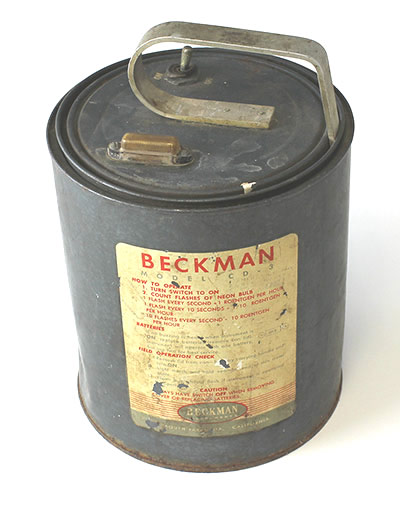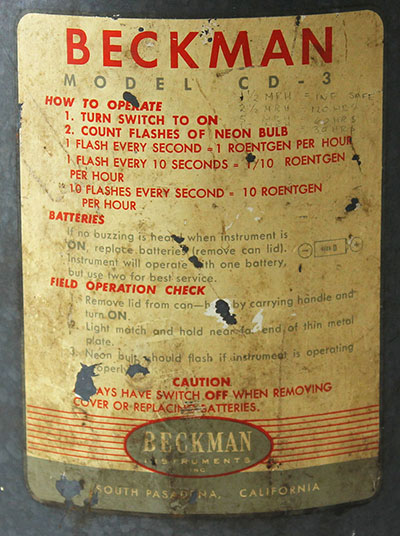Beckman Model CD-3 Monitor (ca. early to mid 1950s)


This is a little bit of a mystery item that was produced sometime in the 1950s by Beckman Instruments. That it was intended for civil defense purposes in indicated by the model number: CD-3. Further evidence is found in the patent description:
"the general object of the invention is to provide a sensitive and reliable radiation detector for use by relatively unskilled operators. Such a device, for example, would be suitable for widespread use in civilian defense for scouting radioactive areas."
The patent (US 2,735,947), assigned to Beckman Instruments, was filed December 1951 by Everett Molloy and awarded February 1956. He described the device as a "portable radioactivity detector of relatively simple and inexpensive construction."
The mystery is whether or not it ever went into commercial production.
The paper label suggests that this example was either made on the cheap, or that it was made as a prototype. A paper label is almost always a bad idea, especially if the device might need to be used outdoors. Civil defense instruments, of course, should be constructed so that they would be able to operate outdoors during inclement conditions. If it was intended to be used by the general public, keeping the price down makes sense.
Operating it was simple. Just turn it on using the toggle switch and estimate the rate at which the light on the top of the can flashed. One flash per second indicated an exposure rate of 1 R/hr.
Besides the simplicity, there are several things to love about this instrument.
First and foremost, the CD-3 is made from a one-gallon paint can. It should be noted that this was not the first instrument to be made from a paint can.
Second, read the Field Operation Check instructions on the label—you take off the top of the can (all the electronics are attached to it) and hold the flame of a match near the chamber's anode, a thin metal plate.
Approximate range: 100 mR to 20 R/hr approx range
Batteries: Two 1.5-volt D cells (only one is required for it to operate)
Size: 7.5" tall (excluding handle), 6.5" diameter
